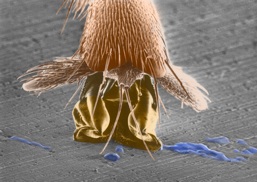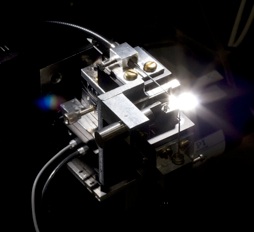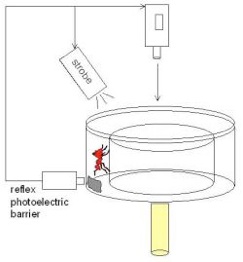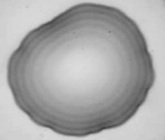
Animal adhesive organs have come into the focus of scientific attention over the last decade because it is hoped that some of their most interesting properties can be mimicked to make novel, superior adhesives. Although attempts to fabricate "biomimetic" adhesives are meanwhile flourishing worldwide, it is striking that the basic function of many animal "model" adhesives is still not well understood. Animal adhesives can not only stick very well to diverse surfaces, but they are also self-cleaning and rapidly controllable, i.e. they can detach very easily if necessary. How they achieve this impressive performance is not yet entirely clear.
We characterize the structure and function of "smooth" and "hairy" adhesive pads, as well as the role of adhesive fluids secreted by them.

Our self-built, computer-controlled setup to measure adhesion, friction and contact area of single adhesive pads - lots of equipment for an insect's foot!

Another experimental tool we use is a centrifuge, in which we spin ants!
Even at 3000 rpm, none of our ants got dizzy....
 Insects have sweaty feet!
Insects have sweaty feet!
Insects adhere via a thin film of fluid which they secrete from their pads. We study this fluid and the adhesive pad contact zone using Interference Reflection Microscopy.
The design and function of adhesive systems in insects is studied by Victor Kang & David Labonte.
Information on InsectiSlide, a new type of eco-friendly, durable and non-toxic insect repellent surface can be found here.

